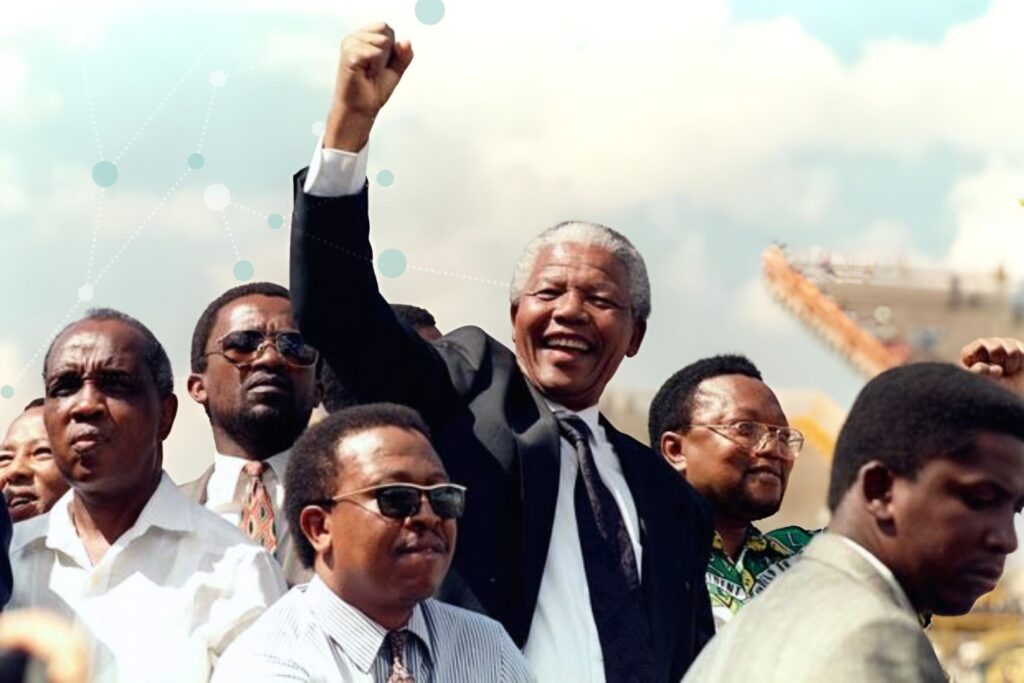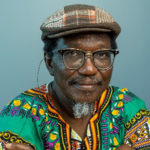Introduction
Adaptive leadership is a panacea for destructive leadership. The story [1] was told of Cuthbert, a much-loved figure in England whose ministry extended to counselling monarchs and ended up influencing state affairs. However, the real legacy he left behind was what he did during the epidemic known as ‘The Yellow Plague of 664’. He toured affected towns and villages, offering encouragement, solace, and hope. In one village, as he was ready to depart, he checked if there was still anyone to pray for and found a woman who had lost one son, clutching her only son alive but now nearing death. Cuthbert took the boy in his arms, prayed for him and kissed his forehead saying: ‘Do not fear, for no one else of your household will die.’ The boy reportedly lived. This represented not only faith in action but also adaptive leadership in practice, by a clergyman with uncommon pioneering leadership traits.
There will always be a need for leadership in different capacities in today’s world, whether in church or society.

By its very nature, the complexity of life in church and society means that things will not always remain stable and predictable. It is of great importance to figure out the most effective kind of leadership required for unpredictable and stormy times. Adaptive leadership is essentially about leading in times of turbulence. Torres says, ‘Turbulence and uncertainty have undermined the effectiveness of long-range forecasting and traditional strategic planning.’[3] This reality raises the question: How can leaders chart a course when they cannot predict the outcomes of their choices? Adaptive leadership provides a viable model.
Adaptive Leadership: What it means to lead in unpredictable and stormy times
The world literally shut down in 2020 due to the COVID-19 pandemic. COVID-19 created uncertainty and leaders from both the church and society saw how an ordered leadership roadmap was shattered. Leadership adaptability became the new normal. Like most people, I wondered what life would be like as I pondered the future while digesting the present realities. I soon came to the conclusion that people would need to develop adaptive leadership skills in all areas of life. In a fast-changing, unpredictable world, leadership that hinges on adaptability and creative problem-solving skills is critical for any organization in order to survive and thrive. Leadership must create room for the inevitability and unpredictability of dynamism. This is the basis of adaptive leadership as developed by Ronald Heifetz, Marty Linsky, and others.[4] The world saw the need for this leadership approach during the COVID-19 Pandemic. In reality, religious and cultural diversity has generated unpredictable and disruptive realities that have ruptured social cohesion. Adaptive leadership helps the leader sail the high seas of change and unpredictability and maximize the opportunities that lie in change. It recognizes that, ‘Progress is impossible without change.’[5] Stephen Hawkings said in an Oxford University graduation speech, ‘The measure of intelligence is the ability to change.’[6] This means that intelligence comes with an inherent adaptive capacity.
Adaptive Leadership is defined by Professor Ronald Heifetz and Marty Linsky as ‘the practice of mobilizing people to tackle tough challenges and thrive.’[7] While Bennington Keri sees adaptive leadership as ‘a leadership model that embraces change, challenging the status quo in favour of experimentation and innovation.’[8]

The winds of change are bound to blow from time to time and they could sweep over everyone; unless one is prepared to withstand its sails. Heifetz, in his 1994 book, Leadership Without Easy Answers, observes that adaptive leaders develop ways to succeed in challenging environments.[10] Leaders take what they have learnt from the past and use the skills to benefit future initiatives. This leadership theory reinforces the view that creativity and innovation, backed with willingness to take considered risks and shared decision-making, are essential ingredients for confronting complex challenges that arise as circumstances change. Some components and principles below help to create a fresh understanding of adaptive leadership.
‘. . . creativity and innovation, backed with willingness to take considered risks and shared decision-making, are essential ingredients for confronting complex challenges that arise as circumstances change.’
Four Key Components of Adaptive Leadership[11]
- Organizational justice: All members of an organization should be treated fairly and carried along through the process of change.
- Developmental culture: An inculturation of learning new things and techniques that can be used in situations of change and challenge should be promoted. This promotes innovative changes which help organizations thrive in difficult times.
- Quality character: The adaptive leadership model relies on persevering through the storm in a positive and courageous manner. This demands firmness of character.
- Emotional intelligence: Leaders who lead adaptively must be able to understand and effectively manage their emotions and those of others through building healthy relationships based on trust. This is essential in creating conducive and enabling environments for the organization to thrive.
Five Key Principles of Adaptive Leadership
Ben Ramalingam and others highlighted five principles of adaptive leadership:[12]
- Evidence-based learning and adaptation: There is need for objective learning of systems and challenges of an organization in order to adapt and grow. This learning process must be open and diverse—a prerequisite for effectiveness.
- Stress-test underlying theories, assumptions, and beliefs: The assumptions and hypotheses guiding an adaptive response need to undergo reflection and examination. A simulation of different possible future scenarios can be done to reduce the risk associated with choices made and to ensure that future crises are handled imaginatively.
- Streamline deliberative decision-making: Decision makers at different levels need to be clear about what they are basing their assumptions and hypotheses on. They need to explain what is being done, why and how a decision was arrived at. This also suggests that if errors are identified in the process, trust can still be maintained going forward.
- Strengthen transparency, inclusion and accountability: Adaptive leaders share their thoughts with those they work with—this is an inclusivity mindset. Adaptive leaders should act in open and transparent ways by acknowledging their weaknesses and accepting that their solutions are not always foolproof in terms of conclusive problem-solving processes.
- Mobilize collective action: Response to challenges need to be built on collaborative and collective action. Adaptive leaders help others to identify shared alignment to the change being proposed. This ensures inclusive ownership in the process.

Adaptive Leadership in Practice
Practicing adaptive leadership is difficult on the one hand and profoundly meaningful on the other; it is not something you should enter into casually.[13] To practice adaptive leadership, a leader must strengthen his or her capabilities in the following four dimensions as suggested by the Boston Consulting Group (BCG):[14]
- Navigate: Navigating through change requires flexibility, openness, and embracing uncertainty. Leading adaptively requires planning as well as flexibility to deviate from the plan as new discoveries are made and conditions change in the process.
- Create a win-win situation: The leader must work to create a win-win situation for every stakeholder of the organization, as this fosters a sense of belonging.
- Self-correct: Leaders should encourage their people to take decisions and self-correct as they go along. This means a leader should refrain from punishing failure which results from experimentation.
- Empathize: Being empathetic, a leader helps people tolerate the discomfort they are experiencing which comes as a result of the change. Empathy helps them navigate through disruptive periods of disturbances.
The Boston Consulting Group suggests that organizations should do the following in order to support the different dimensions of adaptive leadership highlighted above and below:[15]
- Managing the context in which actors interact, not the instruction set. Contexts are constantly changing. Rigid rules inhibit creativity, making it difficult for the best problem-solving solutions to emerge. Flexibility is an important asset for leading in unpredictable and stormy times. The best solutions are more likely to emerge through learning and adapting to change as time progresses.
- Cultivating diverse perspectives to generate multiple options. Adaptive leadership considers dissenting opinions a necessity; and a possible goldmine of ideas. Hierarchy is de-emphasized in adaptive leadership. Sometimes, diversity of opinions and helpful critical questions can come from the lower level personnel in the organization.
- Emerging shared leadership in given contexts. In a world of rapid unpredictable changes, one person cannot lead at all times. Some situations require multiple capabilities. Adaptive leadership recommends fluidity in roles that places the vision of the organization as the most important priority, above positions or titles.
- Constantly questioning the world. Adaptive leaders should not be caught up in the web of self-importance. They always look outward and readjust the sails of their church or organizations to go with the shifting winds of the environment. Curiosity and inquisitiveness are important traits leaders should possess in order to lead adaptively, by seeing complex patterns not obvious to others.
Renewing Leadership for Growth
Changing the leaders’ way of thinking is critical to renewing a church, mission agency, or organization. The grace and ability to renew an organization come more from within the leader rather than outside forces. Adaptive leadership has more to do with vision than control. An adaptive leader is able to read the times well and even goes a step further by anticipating the possible change which could occur.[16] This helps leaders to act discernibly and ensures that organizations’ management leadership teams work to solve their organizational problems creatively while carrying everyone along. The collective interest of all is prioritized above the personal interests of the leaders. Renewal takes place when biblical and organizational principles are valued above personal privileges.
Adaptive leadership has more to do with vision than control. An adaptive leader is able to read the times well
Conclusion
Jesus practiced adaptive leadership in the course of his ministry on earth and upset not only the power structures, which were more rigid and hierarchical in his day, but also the religious leaders who failed to adapt as leaders. He challenged their assumptions and beliefs, and redefined kingdom priorities, values, and loyalties. Loyalty to God first was primary above loyalty to the institutions. When uncertain times set in, listening to God supersedes the leaders’ assumptions. The reverse is the case for those who are inflexible due to institutional rigidity. Jesus redefined inclusiveness in ministry by winning those on the margins of society and demonstrated critical problem-solving skills regardless of their complexities. What does it then mean to lead when it seems impossible to do so? When Jesus calmed the storm[17] and when the woman caught in adultery[18] was brought to Jesus, his subsequent actions demonstrated classical examples of adaptive leadership. Confronting change requires an adaptability of mindset. Adaptive leadership is a great way to ensure that a church, mission agency, or organization thrives no matter how stormy the times are characterized by local and global realities.[19]
Endnotes
- Our Daily Bread, 2023 Annual Edition, Saturday August 5th, Daily Readings.
- CBS NEWS, 23 March 2015, https://www.cbsnews.com/news/memoir-by-nelson-mandela-to-be-released-in-2016/.
- Roselinde Torres, Martin Reeves, and Claire Love, ‘Adaptive Leadership,’ in BCG Global, 11 August 2022, https://www.bcg.com/publications/2010/leadership-engagement-culture-adaptive-leadership.
- Ronald A. Heifetz, Marty Linsky, and Alexander Grashow, The Practice of Adaptive Leadership: Tools and Tactics for Changing Your Organization and the World (Boston: Harvard Business Press, 2009).
- ‘George Bernard Shaw Quotes,’ BrainyQuote, accessed 10 March 2024, https://www.brainyquote.com/quotes/george_bernard_shaw_386923.
- Telegraph and Forbes Magazine, 29 March 2018.
- Heifetz, Linsky, and Grashow, The Practice of Adaptive Leadership, 14.
- Keri Bennington, ‘What Is Adaptive Leadership: Definition &Amp; Heifetz Principles,’ WDHB, accessed 26 February 2024, https://wdhb.com/blog/what-is-adaptive-leadership/.
- Pexels, accessed 27 March 2024, https://www.pexels.com/photo/man-in-white-shirt-sitting-on-red-and-white-boat-4934638/.
- Ronald A. Heifetz, Leadership Without Easy Answers (Cambridge: Harvard University Press, 1994), 239–243.
- Helen Wale, ‘Adaptive Leadership,’ Corporate Finance Institute, 15 October 2023, https://corporatefinanceinstitute.com/resources/management/adaptive-leadership/.
- Ben Ramalingam, David Nabarro, Arkebe Oqubay, Dame Ruth Carnall, and Leni Wild, ‘5 Principles to Guide Adaptive Leadership,’ Harvard Business Review, 11 September 2020, https://hbr.org/2020/09/5-principles-to-guide-adaptive-leadership.
- Heifetz, Linsky, and Grashow, The Practice of Adaptive Leadership.
- Torres, Reeves, and Love, ‘Adaptive Leadership’.
- Torres, Reeves, and Love, ‘Adaptive Leadership’.
- See 2 Chronicles 12:32
- See Mathew 8:23–27
- See John 8:4–11
- Editor’s Note: See article ‘Global Leadership for Global Mission’ by Mary Ho in Lausanne Global Analysis, November 2016, https://lausanne.org/global-analysis/global-leadership-for-global-mission.

